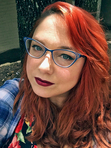Banned Books Month: Guest Post from Cassandra Rose Clark (THE ASSASSIN’S CURSE): I’m Glad I Read Waldo
I grew up the daughter of a librarian. We actually only had one bookshelf in our house, because my mother understood that we had access to hundreds of bookshelves down at the local library. Moreover, my mom pretty much gave me free reign over anything I wanted to read. If it was printed, I could read it, and the idea that kids couldn’t read a particular book, whether because of institutional or parental restrictions, was a pretty mind-blowing concept when I first encountered it in those magical years of my elementary school education.
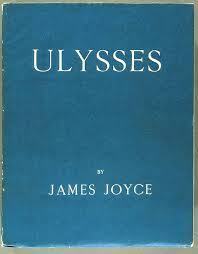
Dover Publications, Unabridged Edition, November 2009.
Even now as an adult, whenever I learn that a book has been banned (or even challenged), there’s still that moment of disconnect: What? People do that? But of course I know they do. The reasons run the gamut, from conservative to liberal and back again—the idea that the political spectrum is a circle, not a line, is never more clear than when you’re looking at the reasons books get banned.
Let’s start with a book that was banned by the US government back in the the 1920s, so thoroughly that, according to Wikipedia at least, the US Postal Service burned copies of it: ULYSSES by James Joyce.
“What!” you cry. “How could ULYSSES be banned! It’s a classic! And no one understands what it’s talking about anyway!”
These things are true (mostly). ULYSSES was actually banned for a particular chapter, Nausicaa. Originally ULYSSES was serialized for a US magazine called The Little Review. When the magazine published Nausicaa, it was brought up on obscenity charges.
I read ULYSSES in college. All the way through, from beginning to end. The only reason I was able to understand the vast majority of it was because I looked up the Sparknotes summaries after I read each chapter. And imagine my delight when I stumbled across this in the summary for “Nausicaa:”
“At the climax of the episode and Gerty’s emotions (and Bloom’s own orgasmic climax, we soon realize) the Roman candle bursts in the air, to cries of “O! O!” on the ground.”
That’s right, “Nausicaa” is an entire chapter about masturbation. Joyce never comes out and says it—the way the text is written merely suggests the experience. Years later, the “Nausicaa” chapter was the only one I remembered in any detail. This summer, as I was preparing to teach a British literature survey course, I found that “Nausicaa” had been selected as the ULYSSES excerpt in the textbook, along with the testimony from the 1930s that eventually led to the obscenity charges being dropped.
You can bet I slapped that reading on my syllabus faster than you can say yes I said yes I will Yes.
But not all banned books have the illustrious and titillating history of ULYSSES. In fact, in what comes as a shock to no one, many of them are children’s books. While scanning through the ALA’s list of most challenged books, I came across a few surprises.
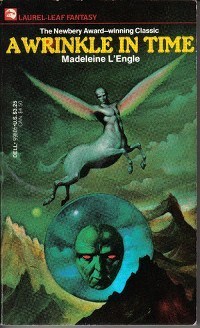
Bantam Books, Mass Market Edition, October 1988.
The first was A WRINKLE IN TIME by Madeleine L’Engle. Now this is one of my favorite books ever. I read it at the exact right age (about thirteen or so) and at my junior high, reading it actually became a fad, like those slap bracelets. I couldn’t imagine anyone banning it. Obviously I don’t support banning books for any reason, but with some texts (like ULYSSES) you can at least kinda-sorta see where people are coming from. But A WRINKLE IN TIME?
So I went digging. According to Banned Books Awareness, A WRINKLE IN TIME has been banned for being “too Christian [and] not Christian enough.”
This will always be the problem with banning books. Fiction, like all art, is audience-dependent in the sense that the reader brings themselves to whatever they’re reading. The story acts like a mirror, reflecting back the things we want to find. If we see something we don’t like, there’s a gut reaction to make it go away forever. But the fact that a book can be banned for being both too much and too little of something shows just how subjective our perceptions are. And when those bans are successful, we prevent others from having the same opportunity to look within a story and see their own reflection.
Another frequently challenged book is Where’s Waldo? by Martin Handford. You remember WHERE’S WALDO? (WHERE’S WALLY? if you’re in the UK). You spend hours scanning crowd scenes looking for a dork in a red-and-white striped outfit. WALDO was basically an emblem of my childhood. So I was shocked to find out that the first Where’s Waldo? Book was frequently banned and challenged during the nineties. Why?
The answer’s simple: sideboob. In a crowded beach scene, there’s an image of woman bathing topless and you can see a bit of sideboob, with the tiniest hint of a nipple. Here’s the image if you’re curious. It’s tiny and hardly noticeable, but it is there, and that was enough.
Honestly, this reminds me of the rumors about certain Disney movies from when I was kid, about how you could see “suggestive” things that had been drawn in by the animators. One that I actually spotted myself (and which was mysteriously erased when Disney released the film last year) was the word “sex” appearing in a glittering dust cloud during the Lion King:
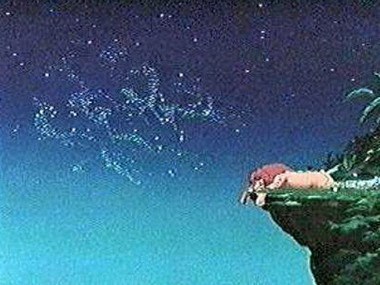
The Lion King: What do you see?
Did I see it because it was there or because someone told me about it? Dunno. It was enough to make the rumor circuit and get people all in a tizzy, just like the sideboob in WHERE’S WALDO? Which is sad, because both sex and sideboobs are a normal part of the human experience. Why do we try to pretend to children that they don’t exist?
I’d try to argue that we’re much more fervent about shielding children from sex than we are about shielding them from violence, but that would be disingenuous of me, since the next two series I want to talk about have both been challenged for violent and disturbing content.
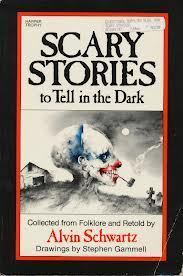
Scholastic Inc, 1989.
I’m speaking, of course, about the SCARY STORIES series by Alvin Schwartz and the GOOSEBUMPS series by RL Stine.
If you have any memories of the 90’s you’ll probably remember these. The SCARY STORY books collected terrifying/gross folk tales and urban legends and paired them with some of the creepiest illustrations I’ve ever seen. GOOSEBUMPS was a series of a middle grade horror stories with titles like NIGHT OF THE LIVING DUMMY, REVENGE OF THE LAWN GNOMES, and MONSTER BLOOD II. They’ve actually been revived through some publisher’s magic which means your little nieces and nephews are probably swapping them on the school playground as you read this.
Unlike WHERE’S WALDO? and A WRINKLE IN TIME, I expected GOOSEBUMPS and SCARY STORIES to be on the list. This was not the case when I was a kid, of course: In fact, my first experience with banned books came when I learned that many schools and parents were uncomfortable with the Scary Stories books. I couldn’t comprehend it. SCARY STORIES? But those books are awesome!
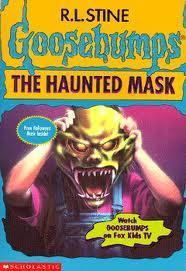
Scholastic Inc, September 1993.
Now, though, as an adult, I do get it. Violence didn’t bother me so much when I was a child because I didn’t fully understand that it was something that could actually happen. Now I do. And so when faced with a children’s story that involves cannibalizing human beings for sausage my immediate reaction is, yes, to try and snatch the book away and get it as far from kids as possible.
But then I remember the first time I heard that sausage story. I was in third grade. A boy named Christopher read it aloud with devilish glee during learning stations. I had a moment of pure terror and revulsion before giggling about it with him afterwards, both of us secure in the knowledge that we were safe.
Years later I had an experience that engendered those same feelings of revulsion, only this time it wasn’t because of a story, but because of real life. It’s trite to say that the moment with Christopher prepared me for what happened—nothing could do that—but I’d still received a sort of inoculation against the horrors of the world.
I’m glad I read those SCARY STORIES books as a child. I’m glad I read GOOSEBUMPS and A WRINKLE IN TIME and ULYSSES, glad I spent hours trying to find WALDO. Every single one of those books added something to my life, some big and some small. If they’d been taken away from me, who knows what I would have missed?
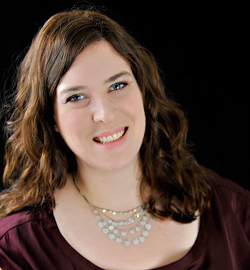
Cassandra Rose Clarke.
Cassandra Rose Clarke grew up in south Texas and currently lives in a suburb of Houston, where she writes and teaches composition at a local college. She graduated in 2006 from The University of St. Thomas with a B.A. in English, and two years later she completed her master’s degree in creative writing at The University of Texas at Austin. In 2010 she attended the Clarion West Writer’s Workshop in Seattle, where she was a recipient of the Susan C. Petrey Clarion Scholarship Fund.
Cassandra’s first novel, THE ASSASSIN’S CURSE, received a starred review from Kirkus and was nominated for YALSA’s 2014 Best Fiction for Young Adults. Her short fiction has appeared in Strange Horizons and Daily Science Fiction. At any given time she is working on a novel.






